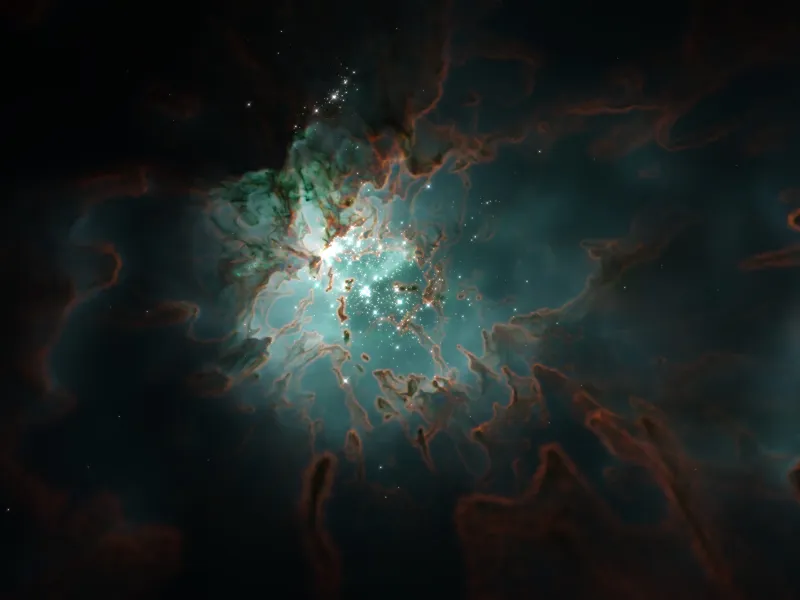The most realistic and high-performance star formation simulator ever created is STARFORGE (Star Formation in Gaseous Environments) .
STARFORGE, developed by Northwestern University in the United States with support from the NSF (National Science Foundation ) and NASA (National Aeronautics and Space Administration), is a cutting-edge model that performs 3D simulations of how stars are born from gas clouds with unprecedented information, precision, and resolution.
By integrating conditions such as gas jets and radiation, which were previously treated separately, we have succeeded for the first time in simultaneously simulating the formation, evolution, and motion of stars .
Simulations using STARFORGE have already revealed new facts about star formation.
The research was published in the May 17th issue of the Monthly Notices of the Royal Astronomical Society .
It takes three months to complete one simulation!
Star formation takes tens of millions of years from start to finish.
So when we look up at the night sky and see star formation, it’s only a snapshot of a moment.
Also, stars form in clouds of gas and dust, so they’re mostly hidden.
Therefore, to understand the entire star formation process, we have to rely on simulations .
However, previous simulators have been unable to accurately track the dynamics of star formation.
“Other models can only simulate a small portion of the gas cloud where stars form , and don’t have a high-resolution view of the entire cloud,” said lead researcher Michael Grudich.
“Without a complete picture, we would miss many of the factors that influence star formation.”
In developing STARFORGE, the research team succeeded in incorporating all known phenomena, including gas cloud jets, radiation, magnetic fields , gravity , heating and cooling , into the computational code.
The completed STARFORGE will run on one of the world’s largest supercomputers, operated by the Texas Advanced Computing Center, and a single simulation can take three months.
Still, it is hoped that STARFORGE will help solve long-standing mysteries such as “why does it take so long for stars to form?”, “what determines a star’s mass?”, and “why stars tend to form in clusters.”
STARFORGE immediately demonstrates its capabilities!
The process of star formation generally involves a dense gas cloud compressing under the force of gravity until it becomes a spherical plasma and a star is created.
In the STARFORGE simulation , in the first stage, a clump of gas with a mass tens of millions of times that of the Sun floats in the galaxy.
From there, the gas cloud evolved to form structures that collapsed into fragments and eventually formed stars.
These stars shoot jets from their poles, piercing the surrounding clouds.
The process ended when there was no more gas needed to form stars.
It is in this jet that new facts were discovered.
When the team ran simulations without the jets, the resulting star ended up being 10 times the mass of the Sun.
But when jets are added, the star’s mass becomes less than half that of the Sun, a more realistic size.
“The jets disrupted the inflow of gas toward the star, blowing away gas that would otherwise increase the star’s mass,” says Grudić .
“It had been predicted that this kind of phenomenon had occurred in the past, but this is the first time that it has actually been confirmed through simulation.”
STARFORGE’s exploits have only just begun, and its true potential has yet to be revealed.
Calculating a star’s mass will help us understand its brightness and internal workings, and may even make it possible to accurately predict when the star will die.
“STARFORGE will help us understand not only star formation, but also our galaxy, the universe as a whole, and even ourselves,” said Claude-André Fauchet-Ziguel, a member of the team .
“If we can understand star formation, we can understand galaxy formation, and if we can understand galaxy formation, we can learn more about what the universe is made of.
“Understanding where we come from and our place in the universe requires understanding the origins of stars.”
Looking forward to seeing what secrets of the universe STARFORGE will reveal.

